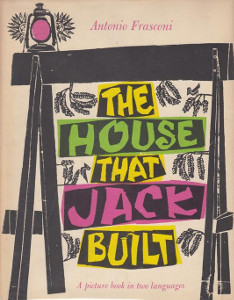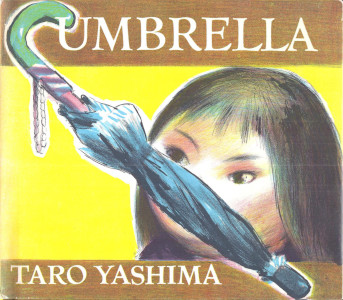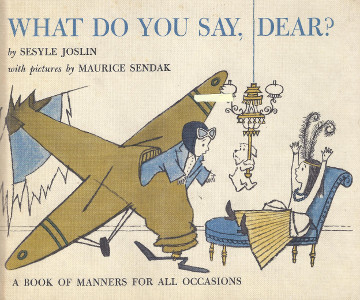Chanticleer and the Fox
By: Barbara Cooney
Medal Winner
NOT REVIEWED
One of the most delightful fables in our heritage is the story of the proud cock and the wily fox who flattered him. Chaucer told the story with vigorous rhythm and singing words; Barbara Cooney has adapted it for children and illustrated it with pictures as handsome as a medieval herbal.
Chanticleer was a merry rooster. "His comb was redder than fine coral and turreted like a castle wall, his bill was black and shone like jet, and his feathers were like burnished gold." He had several hens, the fairest of which was Partlet. It was a great joy to hear them sing together.
But one night a sorrowful event overtook them. A fox, tipped with black, and full of sly wickedness, burst through the hedge into the yard where Chanticleer and his wives were in the habit of going. The fox was clever, but he met his match in the rooster.
Barabara Cooney's pictures are the most beautiful this gifted artist has ever drawn. Richness of color, strength of line, and an abundance of detail will attract children to them time after time and bring new delight to each reading.
From the dust jacket
The House That Jack Built: A Picture Book in Two Languages
By: Antonio Frasconi
Honor
NOT REVIEWED
Generations of children have delighted in the nursery rhyme about Jack and his house. Starting with the familiar refrain "This is the house that Jack built. This is the malt that lay in the house that Jack built," the age-old chant expands to include the maiden all forlorn, the cow with the crumpled horn, and other distinctive characters.
This Caldecott Honor-winning picture book offers an additional attraction to the traditional tale: all of the verses appear in French as well as English. From the opening, "Voici la maison Queen Jacques a batie. Voici le malt qui se trouvait dans la maison que Jacques a batie," to the grand conclusion, the repetition of catchy rhymes provides effortless reinforcement of French words and phrases. Brilliantly colored woodcut illustrations by renowned artist Antonio Frasconi add an ageless beauty to this keepsake edition.
From the Dover Edition
Umbrella
By: Taro Yashima
Honor
Reviewed by: Sandy Hall
Recommended age: Ages 4-8
Also read and recommended by: Sherry Early
Taro Yashima, the author/illustrator of this book, was once imprisoned in Japan for his antimilitaristic views. At the start of the Second World War, he and his wife came to America so he could avoid conscription into the Japanese army, and so he and his wife could study art. They left behind their young son but were reunited with him ten years later in 1949. Taro Yashima was a pseudonym he used to protect himself from repercussions from Japan for his artwork for the United States Office of War Information. During those early years here in the US, he and his wife had another child, a girl named Momo. This book is written for her.
Despite the many hardships Taro endured, and perhaps because of them, he portrays the simple joys of a young child in this story. Momo is the child's name, which was his young daughter's name. Was this sweet story based on a true event in her life when on her birthday she received rain boots and an umbrella? Momo must wait for a rainy day to use these gifts. Finally, the day arrives, and her adventures begin.
The art in this Caldecott Honor book is done in watercolor. Primary colors of yellow, blue, and red carry strongly throughout with the girl's red boots and blue umbrella and book's cover of bright yellow. Momo's dark eyes and hair and the soft colors of the rainy day set the tone nicely. The illustrations show a muted view of Momo's face through most of the book as she sadly and patiently waits for a rainy day, and then at the end you see a full clear view of her smiling face. The city scape illustrations in the front and back endpapers show a bird and a balloon, and the order of those is reversed at the end, perhaps to show the growth in little Momo's life as she now feels so grown up.
This is a sweet story and has been well-loved for generations. How often do we adults rush through life without stopping to realize the milestones the children around us accomplish? Even if it is finally getting to use new boots and an umbrella.
What Do You Say, Dear?
By: Sesyle Joslin
Illustrated by: Maurice Sendak
Honor
Reviewed by: Lara Lleverino
Recommended age: 6 - 12 years of age
Also read and recommended by: Sandy Hall, Sherry Early
"What Do You Say, Dear?" followed by its sequel "What Do You Do, Dear?" by Sesyle Joslin are picture books about snort-through-your-nose absurd situations that tickle readers' funny bones while reminding us that what you say and what you do can be completely independent of the crazy situations we might find ourselves in. I find Maurice Sendak's expressive illustrations the perfect compliment to these laugh-out-loud scenarios.







